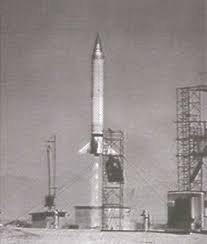On September 6, 1955, the idea of human space travel was still largely considered to be a fantasy. The concept of sending astronauts beyond Earth's atmosphere and into space was seen as a far-fetched and unrealistic endeavor. However, this perception would soon change with the advent of the space age and the remarkable achievements that followed. At the time, the technology required for human space travel was in its infancy. Rockets were primarily used for military purposes, and the idea of using them to transport people into space seemed like science fiction. The challenges of achieving escape velocity, creating life support systems, and ensuring the safety of astronauts were significant obstacles that had yet to be overcome. Nevertheless, there were visionaries who believed in the possibility of human space exploration. Scientists such as Konstantin Tsiolkovsky and Hermann Oberth had already laid the theoretical groundwork for space travel, and their ideas inspired others to pursue this seemingly impossible dream. Just four years later, on October 4, 1957, the Soviet Union launched Sputnik 1, the world's first artificial satellite. This historic event marked the beginning of the space age and ignited a race between the United States and the Soviet Union to achieve further milestones in space exploration. The Soviet Union continued to lead the way in human space travel with the launch of Yuri Gagarin on April 12, 1961, making him the first human to orbit the Earth. This remarkable achievement shattered the notion that space travel was a fantasy and demonstrated that it was indeed possible for humans to venture beyond our planet. The United States, eager to catch up, established NASA (National Aeronautics and Space Administration) in 1958. NASA embarked on an ambitious program to develop the necessary technologies and capabilities for human space travel. The Mercury program, which aimed to put an American astronaut into space, was launched, leading to the historic flight of Alan Shepard on May 5, 1961. From that point forward, human space travel became a reality. The Gemini program followed, enabling astronauts to undertake longer-duration missions and conduct spacewalks. Finally, on July 20, 1969, the United States achieved a monumental milestone with the Apollo 11 mission, when Neil Armstrong became the first person to set foot on the moon. The achievements of the early space programs paved the way for further advancements in human space travel. Space shuttles, space stations, and missions to other planets have since become a regular part of our scientific and technological endeavors. Today, human space travel is not only a reality but an ongoing endeavor with ambitious goals such as establishing a permanent presence on the moon and sending astronauts to Mars. Private companies, such as SpaceX, Blue Origin, and Virgin Galactic, are also actively involved in the pursuit of human space exploration, further pushing the boundaries of what was once considered a fantasy. The transformation of human space travel from a fantasy to a reality is a testament to the indomitable human spirit and our relentless pursuit of knowledge and exploration. The achievements made since September 6, 1955, have opened up a vast universe of possibilities and have forever changed our understanding of our place in the cosmos.
6 Sept, 1955 Human Space Travel Is Fantasy
